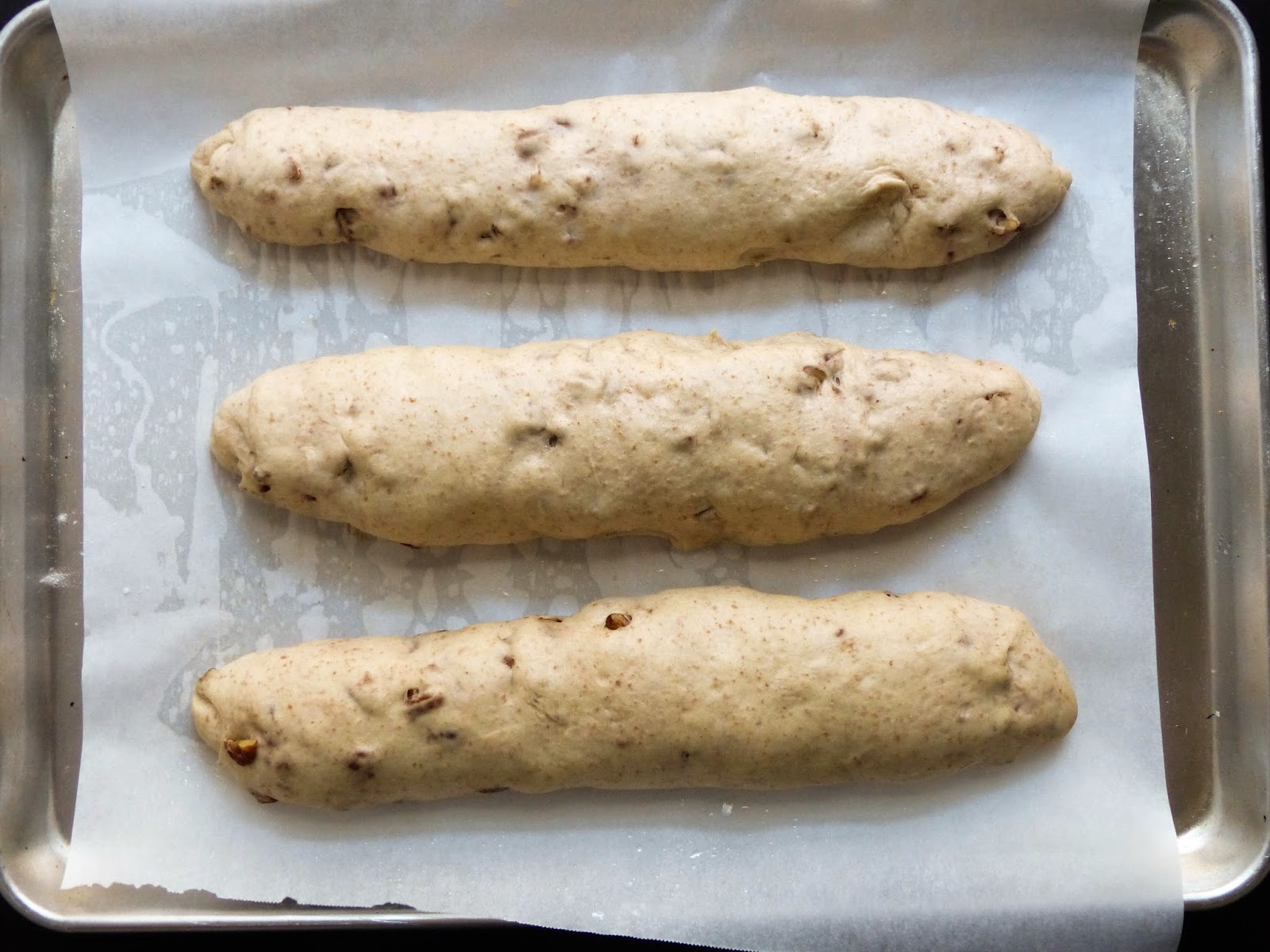The book says that this bread was created specifically to complement roast turkey. The dough has brown butter and brown sugar, but no starter. It relies only on commercial yeast for leavening, the first to do so in this chapter. The result is a dense, sweet dough, studded with pecans. It has a rich and wholesome flavor perfect for a turkey sandwich.
Tania
I had to re-read the ingredients a few times. No starter? Only a few grams of yeast? How would this work? The dough seemed really dense and dry at first, but after the stretches and folds, it was a lot more supple.
I must say, I'm getting much better at shaping the demi-baguettes. I feel more comfortable with the process and it comes more naturally now. It's rewarding to see the improvement in technique.
Another difference in this recipe was the proofing method. Instead of flouring a linen, these loaves were proofed on a baking sheet sprayed with oil. No explanation is given for this difference, but it worked out ok. The only thing, is the bottoms of the loaves were sticky from the oil, and therefore didn't slide off the transfer peel easily. So I added some flour to the peel and that made it easier.
These baked up nice and golden brown, and the smell was amazing! The crust was nice and crusty, and remained so after cooling.
I made a turkey and cheese sandwich with this bread, splitting the demi baguette in half lengthwise and layering sharp cheddar with honey roasted turkey and dijon mustard. After a quick toast, it made for a delicious dinner! Perhaps next time I'll add some crisp bacon.





No comments:
Post a Comment